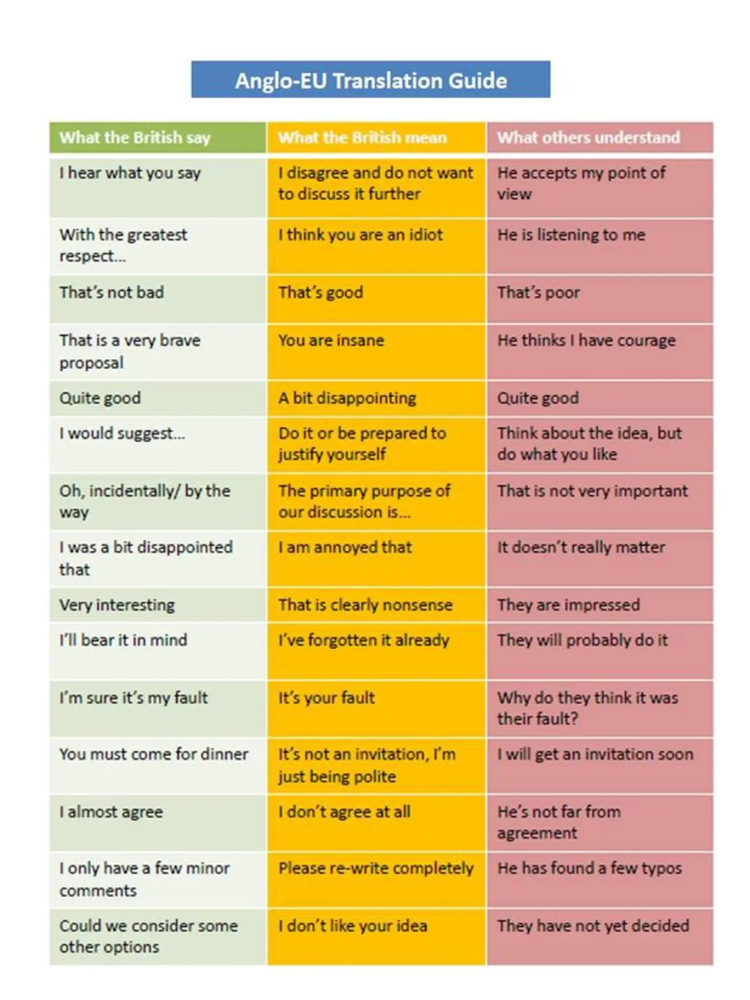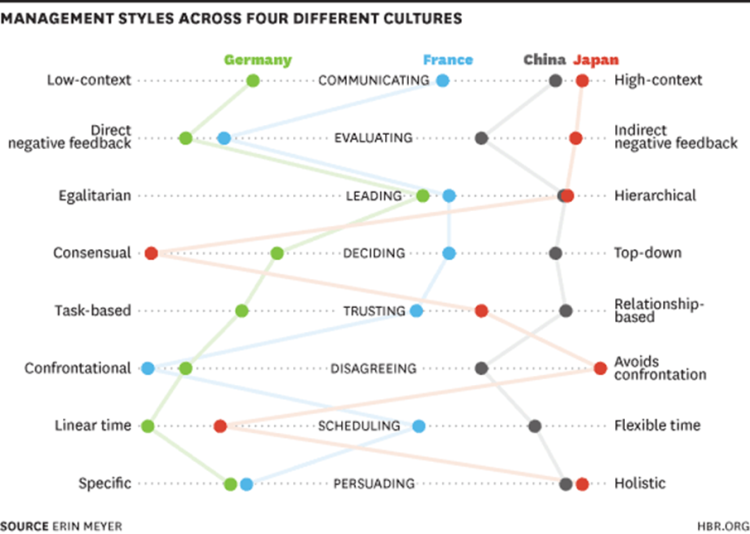I have just finished the Culture Map by Erin Meyer. It’s taken me longer to read than it should, but that’s not her fault. She argues, building on the work of, her predecessors, including Geerte Hofstede, that there are eight dimensions of business communication, these are communicating, evaluating (feedback), leading, deciding, trusting, disagreeing, scheduling and persuading. She argues that cultures share positions on these dimensions as people’s comfort and natural style is based on their education systems and often deep seated cultural and historical factors. She argues that differences are relative i.e. you might be mediumly robust in offering direct feedback, but if you come across someone more so, you will find them rude, and need to recognise that if delivering such feed back to some one from a more robust culture, they may fail to understand.
In communicating, the degree of shared information is the key, low context culture need to communicate simply and explicitly and use summaries to confirm understanding. High context cultures use shared information to inform the conversation and short cutting this shared context can seem rude and ill-mannered. In evaluating, cultures vary with the level of bluntness, and again, those who naturally understate their [negative] feedback may well be misunderstood by those for whom if is a natural style. Leadership styles varying between an egalitarian approach and more hierarchical are also opportunities for confusion and ineffectiveness. The same is so for disagreeing. There is a fascinating explanation on how there can be cultural misunderstandings around scheduling which in some cultures it would seem optional.
The ‘Persuading, scale was interesting, illustrated by a story where an American got stuck because they didn’t explain why their plan would work, or at least not the theory behind it; their German colleagues couldn’t engage with the plan until it was. It’s categorised as task based vs principles based. It is my view that the British aren’t so interested in theory or principles, preferring what works and so called common sense, although Meyer scores us towards the principles end of the scale. This may be aligned with the deciding scale, where the chart below talks about top down or bottom up, but the issue is how to build consensus. In the bottom up solutions, a broadly supported consensus is built before the decision, which is taken late and in the top down cultures, the decision is taken early, adjusted if necessary, and sold to the team, often through change acceptance programmes or training.
Within each chapter, she offers powerful anecdotes to illustrate the differences in culture and offers an inexact scoring mechanism for many leading countries. She offers more exact scorings and charts behind a paywall. Each chapter also talks about how each end of the spectrum can collaborate to improve communication, team work and effectiveness.
An amusing diversion, is that as English becomes the international lingua franca of business, one’s culture creates a misunderstood meaning. Here is a useful guide, although possibly getting less so; an Anglo/EU English translator.

The chart below, shows a comparison between, Germany, France, China and Japan. It comes from the Harvard Review with whom it seems Meyer has an ongoing relationship.

Meyer’s work is well reviewed elsewhere on the internet.
Glad I read it, and in theory it should help, but when doing 121’s it may be difficult to understand if any miscommunication is based on cultural insensitivity by me or just a lack of good old listening skills.
Pingback:Data-driven campaigning: how and why do political parties do it? – davelevy.info